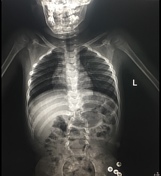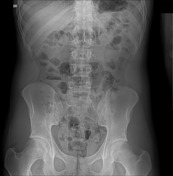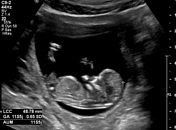40 results found
Article
Spina bifida
Spina bifida is a type of neural tube defect/spinal dysraphism which can occur to varying degrees of severity. It is often considered the most common congenital CNS malformation.
Terminology
Spina bifida in its strictest sense means defective fusion of the vertebral posterior elements, leading...
Article
Spina bifida occulta
Spina bifida occulta is the mildest form of spina bifida/spinal dysraphism and is a type of neural tube defect.
Terminology
While typically referring to asymptomatic posterior fusion defects, some authors 5 use it as a broad term that encompasses closed spinal defects such as:
diastematomyel...
Case
Spina bifida

Published
04 Jan 2020
91% complete
X-ray
Case
Spina bifida occulta

Published
29 Nov 2021
91% complete
X-ray
Case
Spina bifida

Published
15 May 2012
79% complete
X-ray
Case
Total sacral spina bifida occulta

Published
09 Mar 2020
95% complete
X-ray
CT
Case
Spina bifida

Published
18 Jun 2016
69% complete
X-ray
Case
Spina bifida: myeloschisis with Chiari II - prenatal diagnosis

Published
17 Apr 2018
94% complete
Ultrasound
Case
Spina bifida with tethered cord and myelomeningocele

Published
12 Nov 2023
80% complete
MRI
Case
Acrania, exencephaly and spina bifida

Published
15 Jun 2017
75% complete
Ultrasound
Case
Spina bifida occulta

Published
08 Sep 2023
66% complete
X-ray
Annotated image
Case
Spina bifida with lipomyelomeningocoele

Published
27 Apr 2012
62% complete
MRI
Article
Diastematomyelia
Diastematomyelia, also known as a split cord malformation, refers to a type of spinal dysraphism (spina bifida occulta) characterized by a longitudinal split in the spinal cord.
Terminology
Although traditionally, it has been distinguished from diplomyelia (in which the cord is duplicated rat...
Article
Lemon sign
The lemon sign, noted on antenatal imaging, is one of the many notable fruit-inspired signs. It is a feature when there appears to be an indentation of the frontal bone (depicting that of a lemon). It is classically seen as a sign of a Chiari II malformation and also seen in the majority (90-98%...
Article
Craniorachischisis
Craniorachischisis, also known as craniorachischisis totalis, is a rare birth defect and the most severe of the neural tube defects. It refers to the presence of both anencephaly and spina bifida.
Epidemiology
In one study the prevalence of craniorachischisis was 0.51 per 10,000 live births in...
Article
Tethered cord syndrome
Tethered cord syndrome is a neurological disorder caused by tissue attachments that limit the movement of the spinal cord within the spinal canal.
Clinical presentation
Tethered cord syndrome is a clinical diagnosis based on neurologic deterioration involving the lower spinal cord 7. Patients ...
Article
Chiari II malformation
Chiari II malformations are relatively common congenital malformations of the spine and posterior fossa characterized by myelomeningocele (lumbosacral spina bifida aperta) and a small posterior fossa with descent of the brainstem, cerebellar tonsils, and vermis through the foramen magnum. Numero...
Article
Conjoined nerve root
Conjoined nerve roots are the most common nerve root developmental anomaly of the cauda equina, being twice as common as two roots in the same foramen, the next most common anomaly.
Epidemiology
The incidence in cadaveric studies is ~10% (range 8-14%) 2, and in one prospective MRI study was 6%...
Article
Anterior sacral meningocele
Anterior sacral meningocele is a congenital defect seen in the anterior aspect of the spine. It is defined as a meningeal cyst that occurs in the presacral space secondary to agenesis of a portion of the anterior sacrum.
Pathology
Associations
In approximately 50% of cases, associated malform...
Article
Myelomeningocele
Myelomeningocele, also known as spina bifida cystica, is a complex congenital spinal anomaly that results in spinal cord malformation (myelodysplasia).
Epidemiology
It is one of the most common congenital CNS anomalies and is thought to occur in approximately 1:500 of live births 5. There may...









 Unable to process the form. Check for errors and try again.
Unable to process the form. Check for errors and try again.